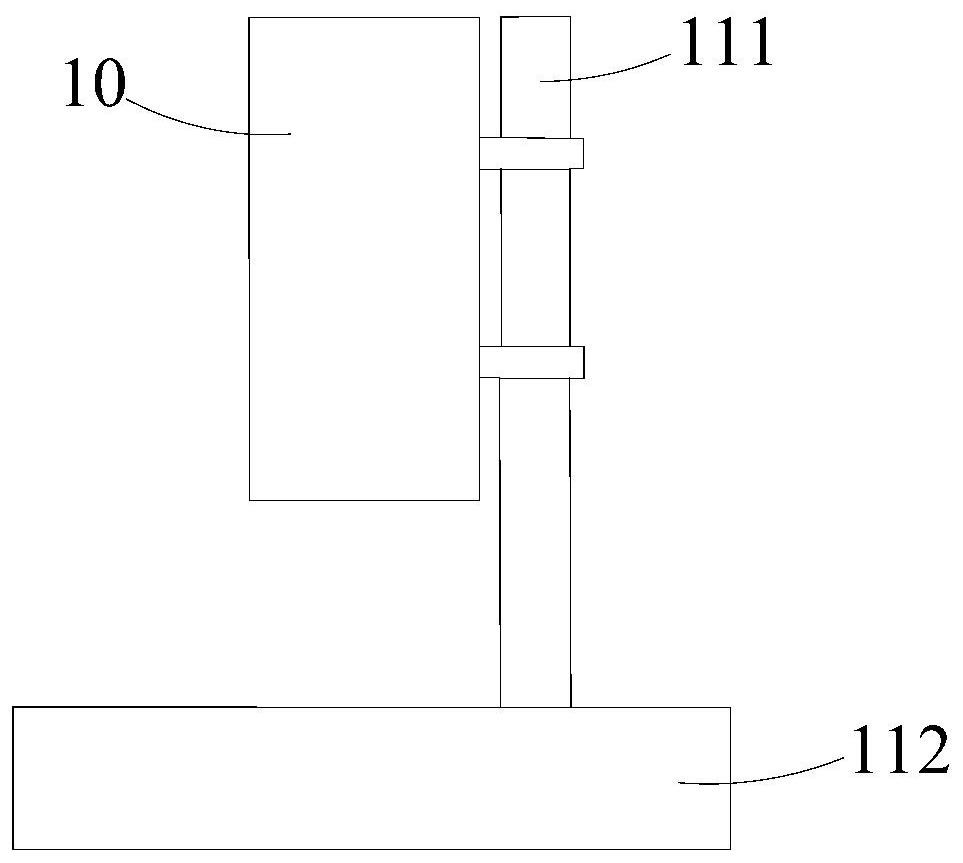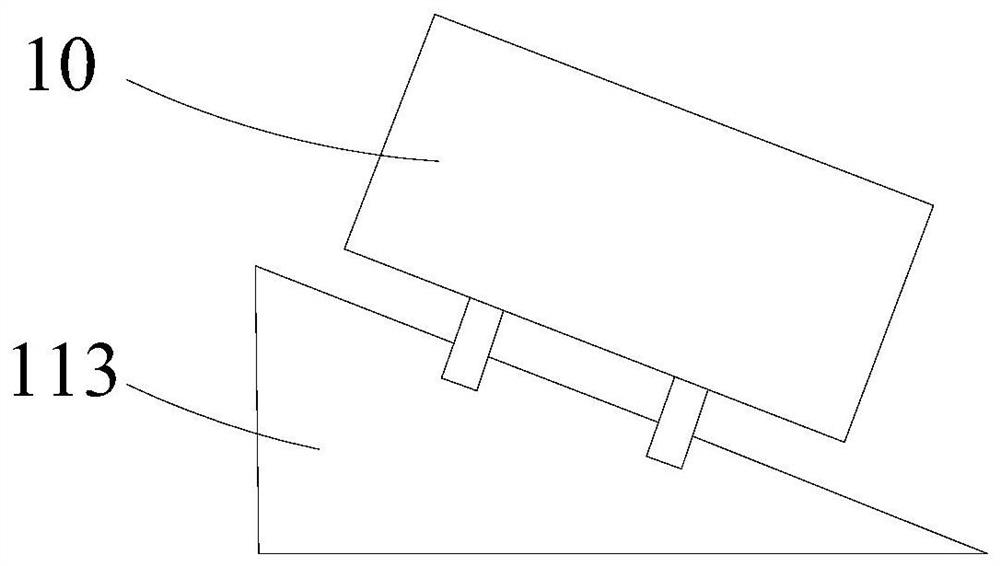Radiating device, inverter and electronic equipment
A heat dissipation device and heat sink technology, which is applied in the transformation of equipment structural parts, modification of power electronics, conversion of irreversible DC power input to AC power output, etc., can solve the problem of attenuation of heat dissipation capacity, reduction of inverter power generation, etc. question
- Summary
- Abstract
- Description
- Claims
- Application Information
AI Technical Summary
Problems solved by technology
Method used
Image
Examples
other Embodiment approach
[0081] In other embodiments, the materials of the heat conduction member 23, the main heat sink 21 and the extended heat sink 22 can also be the same, that is, the heat conduction coefficients of the heat conduction member 23, the main heat sink 21 and the extension heat sink 22 are the same, for example, the heat conduction member 23, the main heat sink 22 The radiator 21 and the extended radiator 22 can be copper or aluminum at the same time.
[0082] When the materials of the heat conduction element 23, the main heat sink 21 and the extension heat sink 22 are the same (that is, the thermal conductivity is the same), in order to increase the heat conduction effect of the heat conduction element 23, a phase change medium can also be arranged in the heat conduction element 23 to improve the thermal conductivity of the heat conduction element 23. thermal conductivity. Specifically, see Figure 8 , the heat conducting element 23 includes a cavity 235, and a phase change medium ( ...
other Embodiment approach
[0089] In other embodiments, the main heat sink 21 and the extended heat sink 22 may not be fixedly connected by a suspension. For example, the main base plate 211 is provided with a first mounting hole, and the extended base plate 221 is provided with a second mounting hole. A mounting hole and a second mounting hole are set correspondingly. During installation, the screws pass through the second mounting hole on the extension base plate 221 and the first mounting hole on the main base plate 211 in turn, so that the main heat sink 21 and the expansion heat sink 22 can be connected. The connection is disassembled, and due to the corresponding setting of the first mounting hole and the second mounting hole, the positioning installation of the main radiator 21 and the extended radiator 22 is realized, and the problems of tilting and unstable center of gravity of the radiator are avoided.
[0090] Similarly, the first mounting hole may be located at the edge of the main substrate ...
other Embodiment approach
[0099] In other embodiments, the heat conduction member 23, the main heat sink 21 and the extended heat sink 22 can all be split structures, and the heat conduction member 23 can be fixed to the main substrate 211 of the main heat sink 21 and the extended heat sink by plugging, bonding, etc. The flexible configuration of the main heat sink 21 and the extended heat sink 22 is realized on the extension substrate 221 of the heat sink 22.
[0100] The heat conduction element 23 and the extension base plate 221 and between the heat conduction element 23 and the main base plate 211 can be thermally connected directly, or an elastic member 27 can be arranged between the heat conduction element 23 and the extension base plate 221 and between the heat conduction element 23 and the main base plate 211 To improve heat dissipation efficiency. refer to Figure 9a, the elastic member 27 can be graphite foam, phase change film, thermal grease, thermal gel or liquid metal. One end of the he...
PUM
 Login to View More
Login to View More Abstract
Description
Claims
Application Information
 Login to View More
Login to View More - R&D
- Intellectual Property
- Life Sciences
- Materials
- Tech Scout
- Unparalleled Data Quality
- Higher Quality Content
- 60% Fewer Hallucinations
Browse by: Latest US Patents, China's latest patents, Technical Efficacy Thesaurus, Application Domain, Technology Topic, Popular Technical Reports.
© 2025 PatSnap. All rights reserved.Legal|Privacy policy|Modern Slavery Act Transparency Statement|Sitemap|About US| Contact US: help@patsnap.com



